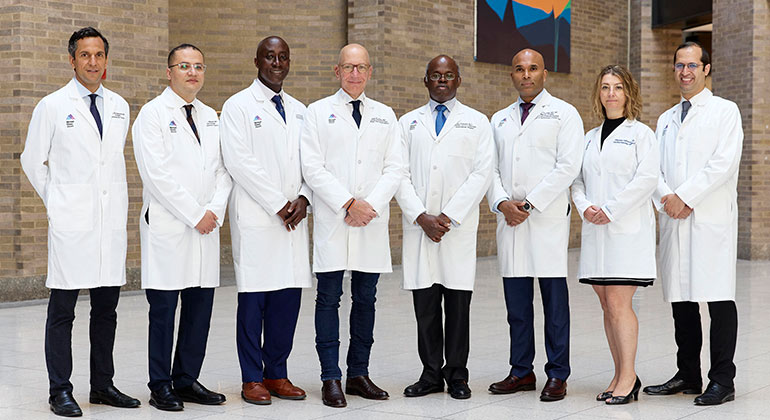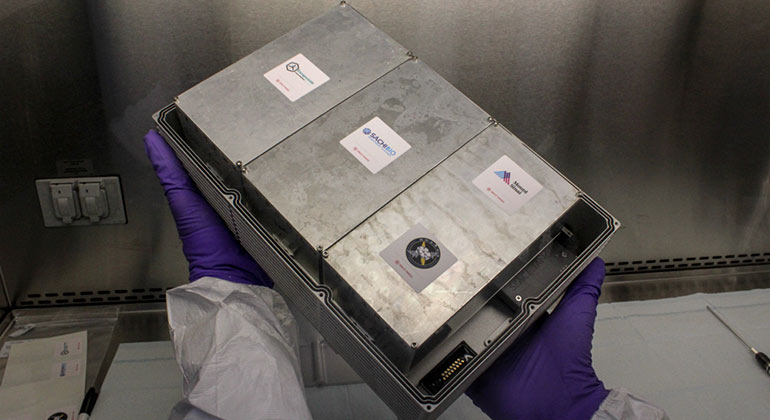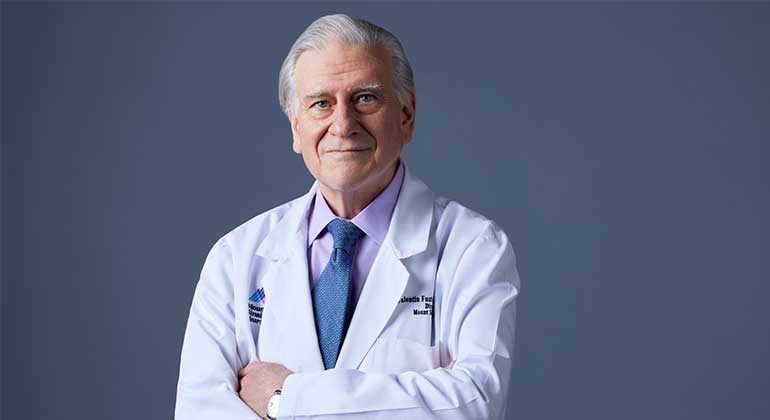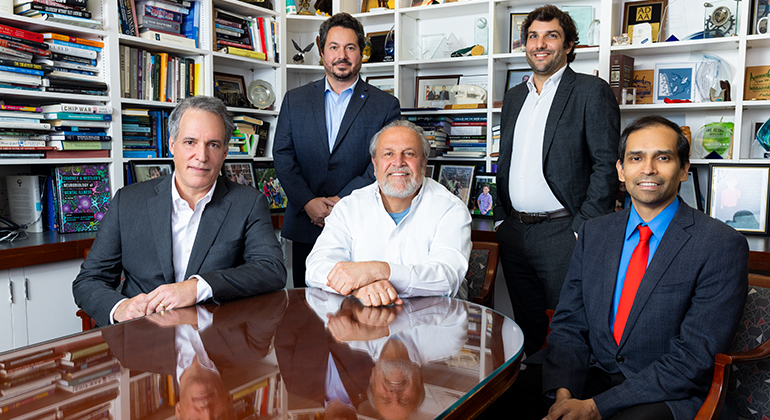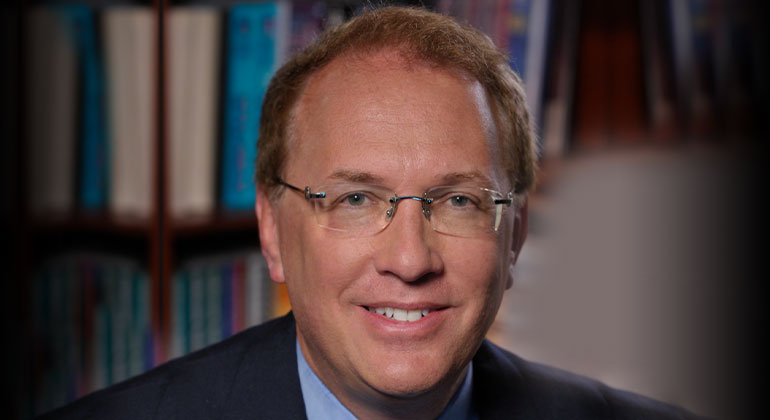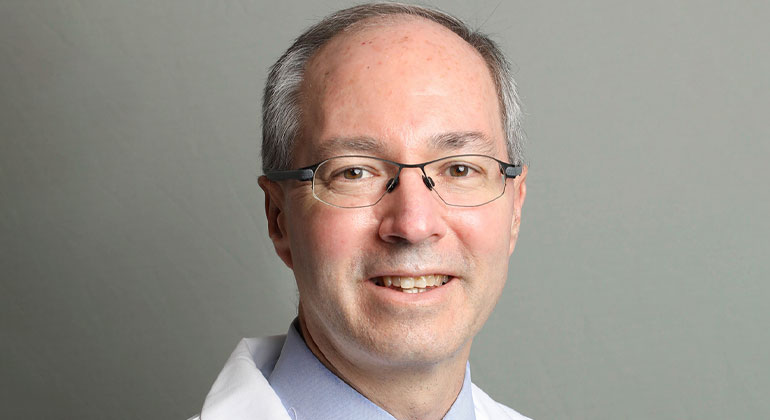Mount Sinai Hospital Cardiologists Debunk the 5 Most Common Heart Disease Myths Plaguing Latinas
In celebration of American Heart Month, cardiologists from The Mount Sinai Hospital addressed the 5 leading myths about heart disease that often misinform the Latino community.
In celebration of American Heart Month, cardiologists from The Mount Sinai Hospital addressed the 5 leading myths about heart disease that often misinform the Latino community. According to the American Heart Association, heart disease continues to be the number one killer of Latinas in the U.S. and Hispanic women are likely to develop heart disease 10 years earlier than other women. With this in mind, the cardiologists at Mount Sinai shared the truths that dispel the most common myths about women and heart disease.
Myth # 1 - "Heart disease is a man's problem. I’m more worried about diseases that affect women."
False. Every year heart disease claims more lives among women than any other disease. Unfortunately, only 13 percent of women identify cardiovascular disease as the greatest health problem facing women today. According to Dr. Vivian Abascal, Cardiologist at The Mount Sinai Hospital and Assistant Professor of Mount Sinai School of Medicine, “a low level of awareness about heart disease exists among women because earlier investigations focused solely on men since cardiovascular disease in males typically occurs at an early age, and men traditionally experienced the highest incidence of heart disease.” By the 1980s, women surpassed men as the main victims of heart disease.
Myth # 2 - "If I have a heart attack, the symptoms will be the same as those in men."
False. Symptoms of a heart attack are manifested slightly different among men and women. As with men, women’s most common heart attack symptom is chest pain or discomfort. But women are somewhat more likely than men to experience some of the other common symptoms, particularly shortness of breath, nausea/vomiting and back or jaw pain. Johanna P. Contreras, Cardiologist at The Mount Sinai Hospital and Assistant Professor of Mount Sinai School of Medicine, explained, "recent studies show that women wait longer than men to go to an emergency room when having a heart attack because they do not identify the symptoms or mistake them for temporary discomfort.” Dr. Contreras adds, "heart disease symptoms may be subtle, so you have to be aware of the symptoms and immediately talk to your doctor to determine the severity of the situation.” If the problem is detected early, many cardiac risk factors can be controlled, modified or deleted, including hypertension, diabetes, high cholesterol, smoking, obesity and physical inactivity.
Myth # 3 - "After heart surgery or stroke, men are more likely to have complications than women."
False. Older women that are hospitalized for acute myocardial infarction have higher in-hospital mortality rates than men. Dr. Abascal explained, "over the years, evidence was accumulating that suggested estrogen helped protect women against heart disease. Women develop heart disease 10 years later than men, but by age 65, their risk is equal to that of men. Men are alerted about heart risks beginning at approximately the age of 40 because they start experiencing heart disease complications around the age of 50.” Dr. Abascal concludes, “by taking preventive measures earlier, men have been better prepared to survive a heart attack or surgery than women. Furthermore, the prevalence of hypertension is higher in women over 65 years of age than in men, which increases the risk.”
Myth # 4 - "Hypertension is not a serious problem for women. If I am not feeling any symptoms, I'm fine."
False. Hypertension is the most important, modifiable risk factor for ischemic stroke. If hypertension is not treated early, it can lead to irreversible damage. Dr. Contreras explains, "some people call hypertension ‘the silent murderer’ because its symptoms are subtle or not present and, in its early stages, only through a deep examination can the diagnosis be made." Hypertension prevents blood from flowing properly throughout the arteries, which over time can cause heart attacks and damage to other vital organs. Dr. Contreras adds, “the good news is that in most cases hypertension is treatable with a combination of lifestyle changes and medication, preventing the deleterious effects that hypertension can have long-term."
Myth # 5 - "A ‘broken heart’ is a just an expression. Emotions really don’t affect my heart."
False. Broken heart syndrome is a temporary heart condition brought on by stressful situations, such as the death of a loved one. According to Dr. Abascal, "broken heart syndrome can be confused with a heart attack because the patient can even experience shortness of breath. Only when tests are conducted, can the real problem be identified.” Although broken heart syndrome can be cured within 2 to 4 weeks, women should be aware of its existence. Dr. Abascal added, "it has been shown that chronic stress increases blood pressure which over time, can lead to a heart attack or other complications.”
Awareness and knowledge are the first steps in taking control of your health. Maintain a healthy lifestyle that includes exercise, a balanced diet and regular appointments with your doctor. Remember to take care of yourself and encourage those around you to do the same.
To learn more ways to stay healthy, tune in every Saturday at 11am on Telemundo Channel 47 New York for ¡A tu Salud!, a health and wellness TV series created by The Mount Sinai Hospital especially for the Latino community. For an appointment with a specialist contact: 1-877-241-4983 or visit www.mountsinai.org/Latino
###
About The Mount Sinai Medical Center
The Mount Sinai Medical Center encompasses both The Mount Sinai Hospital and Mount Sinai School of Medicine. Established in 1968, Mount Sinai School of Medicine is one of the leading medical schools in the United States. The Medical School is noted for innovation in education, biomedical research, clinical care delivery, and local and global community service. It has more than 3,400 faculty in 32 departments and 14 research institutes, and ranks among the top 20 medical schools both in National Institutes of Health (NIH) funding and by U.S. News & World Report.
The Mount Sinai Hospital, founded in 1852, is a 1,171-bed tertiary- and quaternary-care teaching facility and one of the nation’s oldest, largest and most-respected voluntary hospitals. In 2011, U.S. News & World Report ranked The Mount Sinai Hospital 16th on its elite Honor Roll of the nation’s top hospitals based on reputation, safety, and other patient-care factors. Of the top 20 hospitals in the United States, Mount Sinai is one of 12 integrated academic medical centers whose medical school ranks among the top 20 in NIH funding and US News & World Report and whose hospital is on the US News & World Report Honor Roll. Nearly 60,000 people were treated at Mount Sinai as inpatients last year, and approximately 560,000 outpatient visits took place.
For more information, visit www.mountsinai.org/Latino Follow us on Twitter @mountsinainyc.
Contact:
Andrés Reyes, Latin2Latin Marketing + Communications.
954 376 4800 / andres@latin2latin.com
About the Mount Sinai Health System
Mount Sinai Health System is one of the largest academic medical systems in the New York metro area, with more than 43,000 employees working across eight hospitals, over 400 outpatient practices, nearly 300 labs, a school of nursing, and a leading school of medicine and graduate education. Mount Sinai advances health for all people, everywhere, by taking on the most complex health care challenges of our time — discovering and applying new scientific learning and knowledge; developing safer, more effective treatments; educating the next generation of medical leaders and innovators; and supporting local communities by delivering high-quality care to all who need it.
Through the integration of its hospitals, labs, and schools, Mount Sinai offers comprehensive health care solutions from birth through geriatrics, leveraging innovative approaches such as artificial intelligence and informatics while keeping patients’ medical and emotional needs at the center of all treatment. The Health System includes approximately 7,300 primary and specialty care physicians; 13 joint-venture outpatient surgery centers throughout the five boroughs of New York City, Westchester, Long Island, and Florida; and more than 30 affiliated community health centers. We are consistently ranked by U.S. News & World Report's Best Hospitals, receiving high "Honor Roll" status, and are highly ranked: No. 1 in Geriatrics and top 20 in Cardiology/Heart Surgery, Diabetes/Endocrinology, Gastroenterology/GI Surgery, Neurology/Neurosurgery, Orthopedics, Pulmonology/Lung Surgery, Rehabilitation, and Urology. New York Eye and Ear Infirmary of Mount Sinai is ranked No. 12 in Ophthalmology. U.S. News & World Report’s “Best Children’s Hospitals” ranks Mount Sinai Kravis Children's Hospital among the country’s best in several pediatric specialties.
For more information, visit https://www.mountsinai.org or find Mount Sinai on Facebook, Twitter and YouTube.
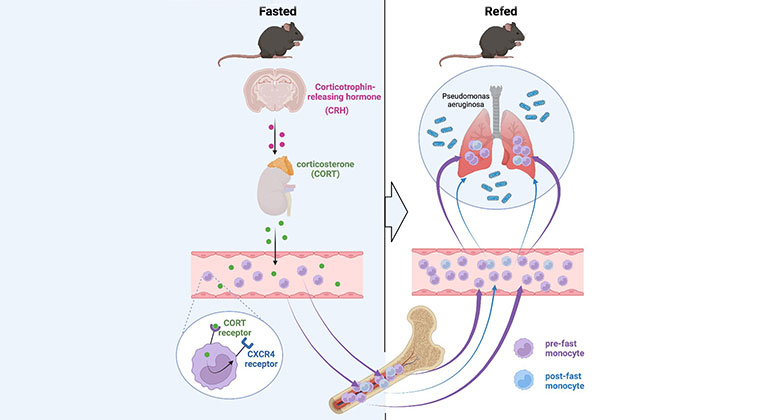
Skipping Breakfast May Compromise the Immune System
Feb 23, 2023 View All Press Releases
Valentin Fuster, MD, PhD, Receives Prestigious Award from City of Barcelona, Spain
Jan 23, 2023 View All Press Releases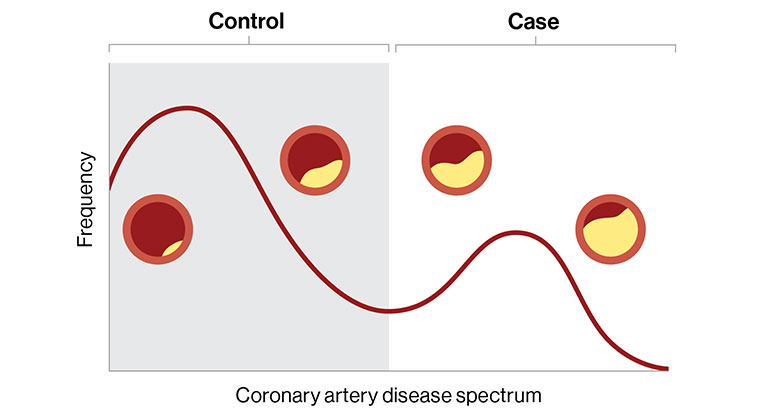
Digital Marker for Coronary Artery Disease Built by Researchers at Mount Sinai
Dec 20, 2022 View All Press Releases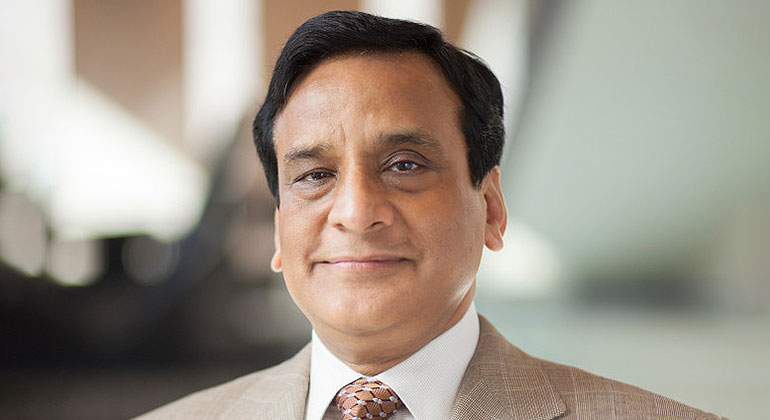
Samin Sharma, MD, Named Director of the Mount Sinai Cardiovascular Clinical Institute
Nov 28, 2022 View All Press Releases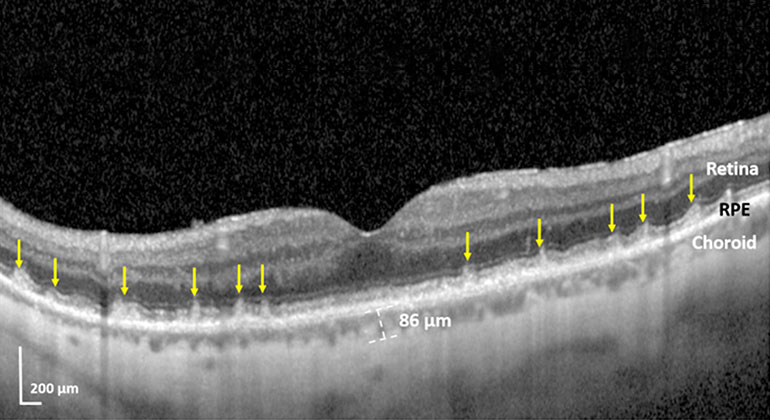
Blinding Eye Disease Strongly Associated With Serious Forms of Cardiovascular Disease
Nov 17, 2022 View All Press Releases